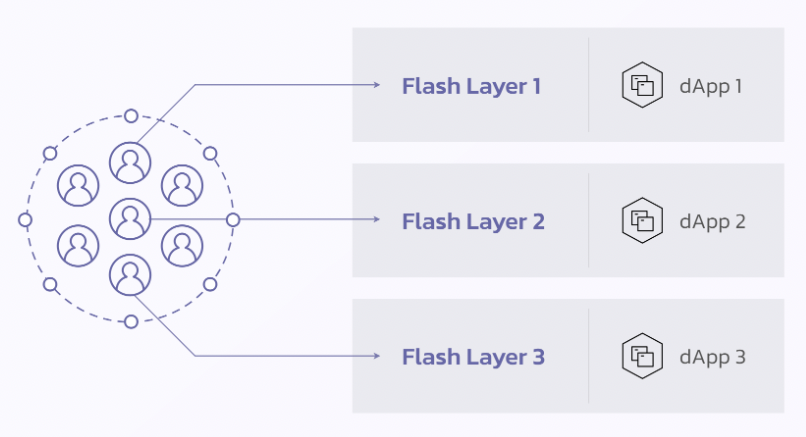What are Flash Layers?
AltLayer provisions flash layers for smart contracts across multi-chains with a very short time-to-set-up compared to custom solutions, which require considerable time (months) and effort (a full-fledged development team) to deploy despite the prevalence and ubiquity of DeFi, GameFi, and SocialFi applications.

Consider an NFT sale happening on an L1. As the developer notices a surge in demand, she initiates a flash layer. Once the NFT sale is completed on the flash layer, the resulting state is committed to the L1. The flash layer is subsequently freed and taken down.

Basic Setup
From a dApp developer perspective, working on flash layers involves interacting with an array of tools and components, namely:
- dApp Portal: Allows developers to perform administrative operations (e.g., deploying and configuring smart contracts, executing state rollups) on both the flash layer and the target L1 chain.
- Block Explorer: A BlockScout explorer dedicated to indexing data on the flash layer chain.
- Bridge App: Allows end users to bridge ERC20 tokens between the flash layer and L1 chain.
- Bridge Explorer: Stores bridge transaction information.
- Faucet: Distributes native tokens on the flash layer.
Additionally, for specific use cases, we also provide developers with resources that can be customized according to their needs (e.g., a template web app for NFT minting).
The next sections explore these in more detail, including concrete steps on how to use them.